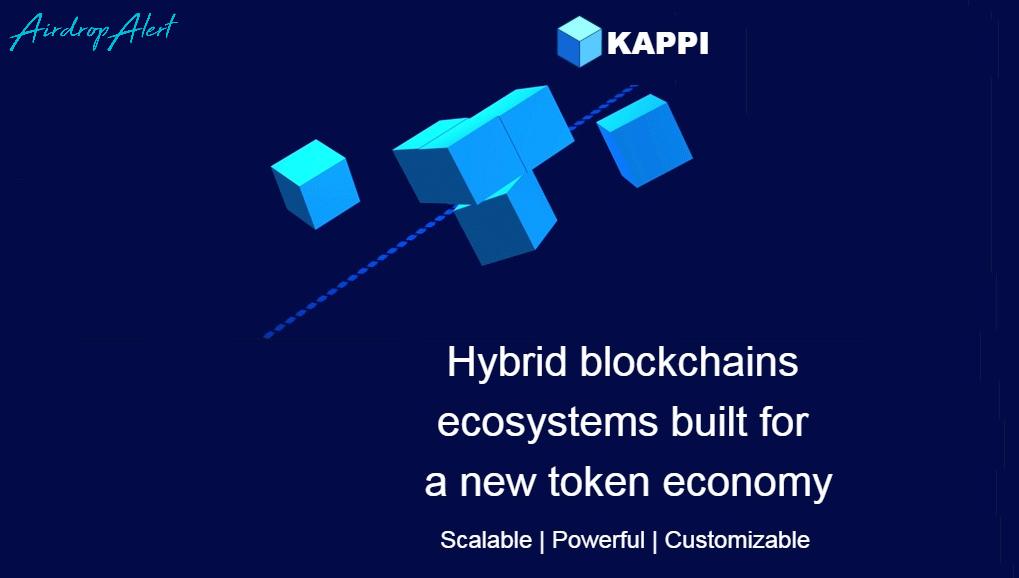
KAPPI is an independent and decentralized hybrid blockchain network. They help solve many problems from existing blockchain such as scalability, TPS, usability, security. sovereignty.
Creating success through the use of decentralized file-sharing in the open-source ecosystem to run public cryptocurrency has allowed more people to understand how such infrastructure can improve basic social economies. Bitcoin, and Zero cash are two examples of special blockchain applications, and the best example of a smart contract platform is still Ethereum, which allows many Ethereum Virtual Machine (EVM) applications.
There are several drawbacks to the various blockchain that have been made so far, such as lack of energy efficiency, lack of any kind of well thought out governance mechanism, and limited or poorly performing blockchain. Scalability was unthinkable when Bitcoin was formed, and now there are proposals to create scalability throughout the entire Bitcoin transaction process. This includes Bitcoin and Segregated-Witness, both of which are vertical scaling models that are still bound by lack of capacity in each machine.
This approach is needed for previous blockchain that does not consider their scalability because of the requirement to maintain complete auditability. There is also an Information Network, which can be used instead of alternative options to bring scalability to Bitcoin transaction volumes.
This will be achieved in the Lightning Network by reducing the number of transactions in the ledger. This approach is suitable for private payment rail payments and for micro payments but may not comply with the more general scaling requirements. Some blockchain that runs in parallel can use this solution profitably, allowing for interoperability and still maintaining all the security properties of blockchain.
The proof of work approach makes all this impossible. For joint mining, work is allowed to do to secure the parent chain for reuse in the child chain but does not eliminate the need for each individual transaction to be validated by each node in sequence. Blocked mines are also open to attack from the majority of the power of hashtags in the parent chain, where there is no active merging of child chains. This is where KAPPI enters. KAPPI is a unique blockchain that has a network architecture that addresses each of the above problems.
KAPPI Consensus Protocol
The KAPPI consensus protocol and interface used to build applications are supported by nodes that maintain non-negative sound strength. This is different from the classic Byzantine Fault Tolerant (BFT) algorithm where each node has the same weight. In the KAPPI consensus, validators can participate in the consensus protocol through cryptographic broadcasting
signature based, which is referred to as vote, which approves the next block. The power of voting from each validator is determined at the beginning and can be changed deterministically in the blockchain, which will depend on what the application is. An example of this is that betting tokens can be bound as collateral to determine the strength of a vote. Unless all validators have the same value
weight, fractions will not be used to refer to the validator but only to the total power of voting.
An analogy can be made with Bitcoin, known as a cryptocurrency blockchain that operates by having each node carry a fully audited Unspent Transaction Output (UTXO) database. If someone wants to create such a system on the basis of ABCI, KAPPI DWARF will have the responsibility to share transactions and blocks between each node. This will form a
perpetual or canonical orders for transactions on the blockchain.
Distribution Token

35%: Personal sales
20%: Public Sales
20%: Team
10%: platform development fund
10%: Play swap burn
5%: Bounty
Roadmap
Mar 2018
Blockchain research
August 2018
Initial coding, draft whitepaper
December 2018
Prospective investor meetings
May 2019
Kappi Network LTD was formed
Jun 2019
Personal Sales
August 2019
Distribution registration
Sep 2019
Public sales
February 2020
Testnet 1.0 (Red Dwarf) lives
May 2020
Testnet 2.0 (White Dwarf) lives
Jul 2020
Mainnet (Polymorph) lives
Nov 2020
Mainnet swap
Feb 2021
Kappi Network blockchain licensing
May 2021
Mainstream adoption through licensing sales
Meet Our Team
Daniel Jonsson
Founding father
Anna Lanonen
Development of Project Leaders
Miguela Webster
Network Architect
Anna Ketola
The developer
Saad Sher
The developer
David Attard
Graphic designer
For more clear information please visit the link below:
Website | Twitter | Telegram | Bounty Group | Management Group | Reddit | Linkedin | Steemit | Github | BitcoinTalk
Profile : https://bitcointalk.org/index.php?action=profile;u=2071847
ETH : 0x4d62578fF637878dbd0B980053a30Ee72A48966e